The brown praying mantis is a symbol of good luck in many different cultures. Luckily, they are not poisonous.
They are predatory insects that eat other insects, but they do not have poison glands that they can use to kill their prey. They do not carry any venom, and their bite causes no lasting harm.
Table of Contents
What Is Brown Praying Mantis?
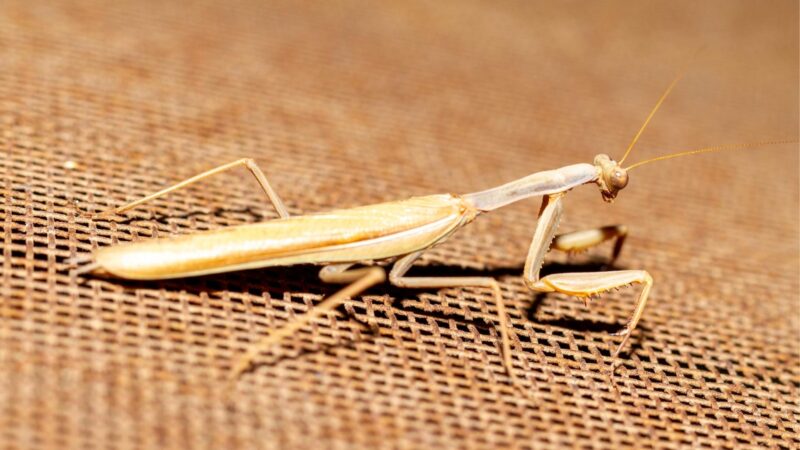
Brown praying mantises can be easily distinguished from other mantis species by their brown color. They have large eyes and they use their sharp mandibles to catch small insects. Also, they will attack prey by grabbing its forelegs and holding it in place as it strikes with its mandibles.
Moreover, praying mantises have very sharp and powerful jaws that can crush anything from small beetles to lizards. They are capable of killing other animals, including birds, mice, frogs, and even snakes!
Where Does Brown Praying Mantis Come From?
It is a species of praying mantis native to Europe. Brown praying mantises are a common and widespread species of praying mantis. They are found in many different habitats, from forests to deserts.
The brown praying mantis is a nocturnal insect that spends most of its time hiding from predators under rocks, logs, or leaf litter. Brown praying mantis habitat can be found in the warm, dry areas of the United States.
They prefer living in trees where they can hide from predators and bask in the sun to raise their body temperature so they can hunt more efficiently at night when nocturnal creatures are active around them.
Does the Color of a Praying Mantis Mean Anything?
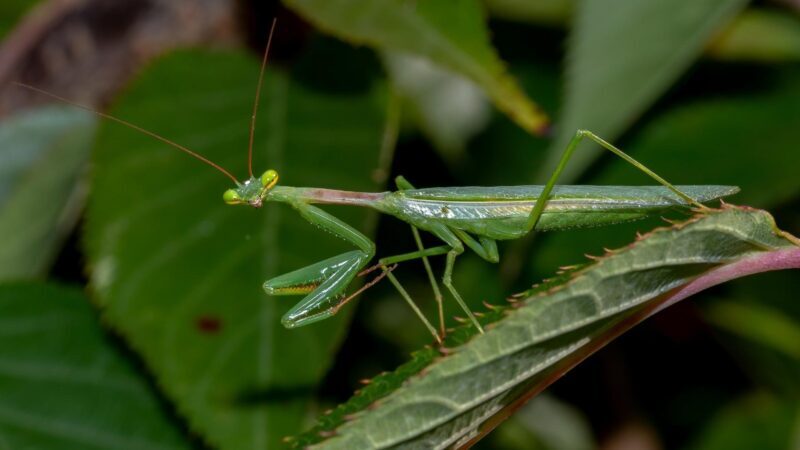
The color of a praying mantis is not an indication of its species but is instead determined by the insect’s habitat.
What Does It Mean When a Praying Mantis Is Brown?
A brown praying mantis implies that a specific mantis lives in a habitat with mostly dead leaves and wooded surroundings. The brown coloration serves as camouflage for these mantis species because it makes them blend into their surroundings better than if they were just black or white.
Can a Praying Mantis Be Brown and Green?
The praying mantis may change color from green to brown. Their coloration may change from green to brown, depending on the environment and what nutrients are available. This can help them blend in with their surroundings.
The more land cover and vegetation that is available, the more likely it is for a mantis to be brown or green. However, it can’t be both at the same time because the way that the praying mantis changes its color is gradual and not quick.
What Are the Stages of a Praying Mantis?
To ensure the survival of its species, the praying mantis relies on three highly specialized stages: egg, nymph, and adult. The praying mantis egg hatches into a tiny grub called ootheca that undergoes several molts as it grows into an adult. Approximately 200 or more eggs are laid by the female mantis.
After the egg hatches it becomes a nymph. Nymphs usually don’t have wings. Once it has grown enough to be able to hunt on its own and fend off predators, it undergoes hemimetabolous metamorphosis into an adult. It goes on several stages of shedding its exoskeleton until it fully reaches the adult stage.
What Is a Praying Mantis Lifespan?
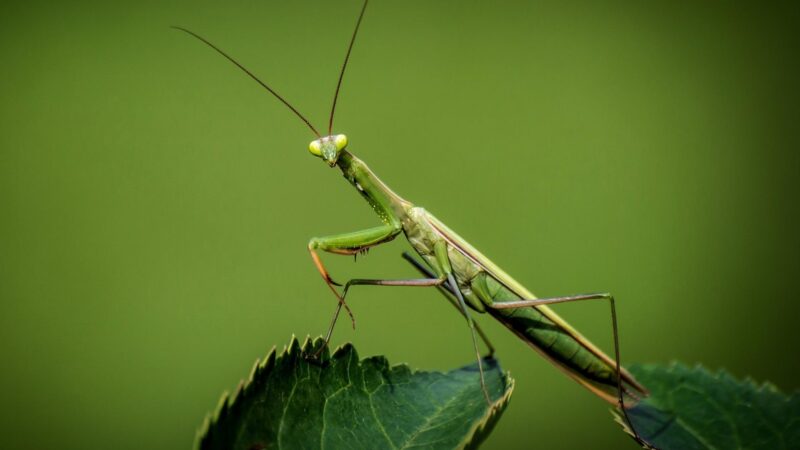
The lifespan of a praying mantis depends on the species, but it can be anywhere from six to 12 months. The longest living mantis, also known as the giant Asian mantis, has a lifespan of 18-24 months. Its lifespan depends on many factors, including environment, diet and nutrition, and genetics.
What Does Brown Praying Mantis Eat?
The brown praying mantis is a carnivore that eats meat, insects, and other invertebrates. Their diet is based on a variety of insects such as flies, beetles, caterpillars, grasshoppers, crickets, and even small birds.
Related: What Does Praying Mantis Eat? | Information and Facts
Are Brown Praying Mantis Invasive?
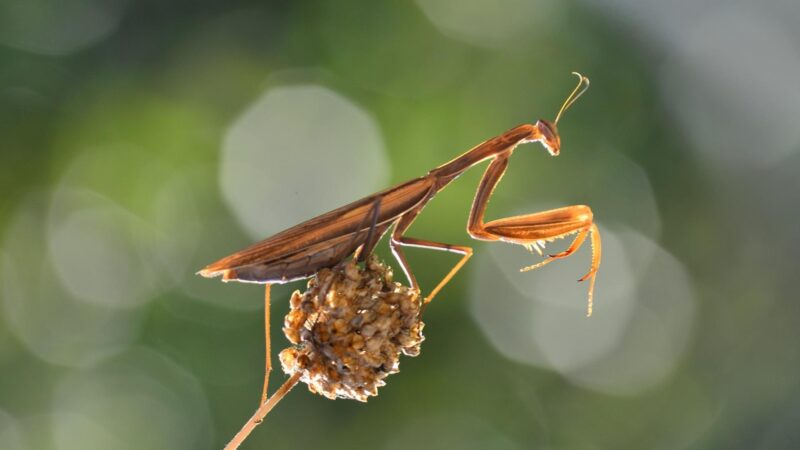
Brown praying mantis are not invasive. They are considered a “non-invasive” species, meaning that they are not able to spread their population well outside of the place in which they originated. Brown praying mantis can be found in many parts of the world, but are mostly found in tropical climates.
It is not considered to be an invasive species because its population is relatively small and it does not have any negative impacts on native wildlife or plants in North America. In fact, many people think that brown praying mantises are beneficial because they eat pest insects like spiders.
Additionally, they are not likely to invade a specific place, knowing that females feed on their mate during reproduction. This is one of the interesting facts about praying mantises.
What Makes a Praying Mantis Deadly?
The praying mantis is a carnivorous insect that has been known to kill other insects and small animals. They use their front legs to hold onto their prey and then move into a “kill position” with their back legs. In this position, the mantis uses its forelegs to grasp its prey and crush it between its front legs.
The praying mantis uses its mandibles to puncture its insect or animal victim’s skin, allowing it to suck out the juices inside of it. Then, it eats this fleshy meal by chewing bits off at a time until it has consumed all of it.
Praying mantises are masters of disguise, able to blend into their surroundings and ambush or outright kill their prey.
Can a Praying Mantis Harm a Human?
Praying mantis cannot harm humans. Their bite is painful but not fatal for humans because it has no sting or venom.
How Do You Tell How Old a Praying Mantis Is?
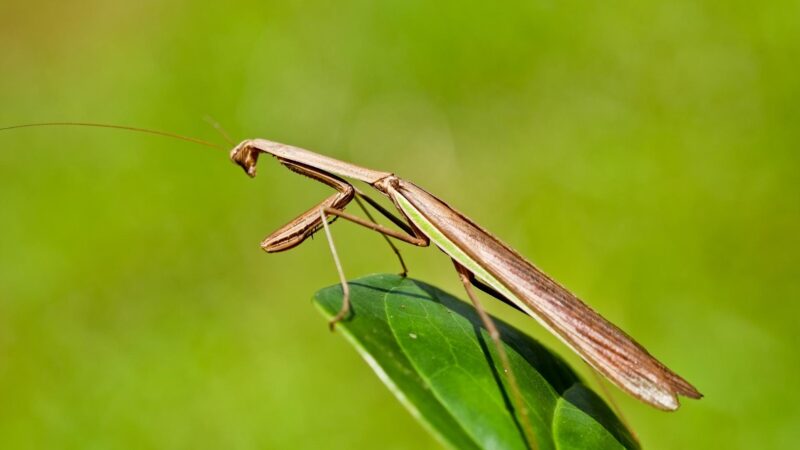
The first thing you should do when you see a praying mantis is to look at their wings. The wings of a praying mantis indicate where in its life cycle it is. If they are in the early stages of development, you will see that they have patches of hair on their wings. This means that your praying mantis is still very young and doesn’t have any pigment on its wings yet.
If your praying mantis has many patches of hair on its wings and does not have any pigment on them yet, then it is probably around 2-3 weeks old. If your praying mantis has none of these things, it will probably be around 2 months old or older.
Another thing to consider is their size. The size of these insects is important when determining their age. If you want to know how old a praying mantis is, you need to look at its wingspan.
The smaller the praying mantis is, the younger it is likely to be. If you find an adult praying mantis with a wingspan greater than 2 inches (5 cm), it’s probably more than six months old.
Do Praying Mantis Need Water?
Praying mantises do not need water or food as much as other animals do. They can survive without eating any type of plant or animal matter for up to two weeks at a time without dying from hunger or thirst. They can survive in a dry environment.
Praying mantis can live for weeks without water but still need it, especially when it sheds its skin and when females lay their eggs. On a regular time, praying mantis can drink dew from leaves and flowers.
How Much Does a Praying Mantis Eat a Day?
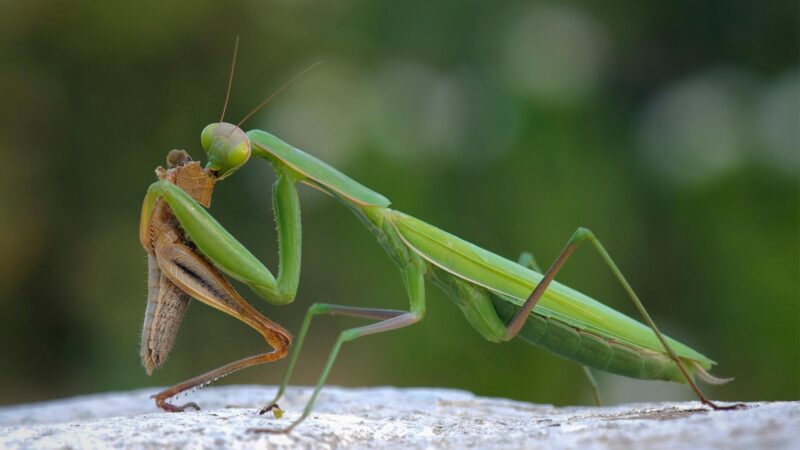
A praying mantis can eat at least six insects in a day. They don’t have to catch every single one—just enough to get by until their next meal comes along. Praying mantis does not have to eat every day. It can survive for days without eating.
Adult mantis spend most of their time eating and digesting their food. Because they’re inactive during the day, they also need to keep themselves fed by eating smaller meals throughout the day. They’ll typically eat about 20-30% of their body weight in food every day.
What Are Praying Mantis Good For?
The praying mantis is an amazing insect that can be used to control the harmful insects and pests in your gardens, such as ants, aphids, and caterpillars, which can damage plants by sucking their juices or eating leaves.
While these insects may look terrifying, praying mantises are not poisonous. The only time you’ll even know that one attacked you is when the speck of blood from the bite begins to show up on your skin.
The praying mantis is a very unique and beneficial insect that plays a vital role in the balance of nature. Given some of the facts outlined above, it’s no wonder that many cultures around the world hold these insects in high esteem.